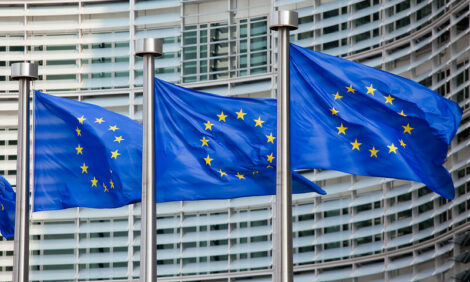



Science Bridges the Gap to Future Food Security
NETHERLANDS - A speaker from DuPont at the recent Nutreco AgriVision conference in the Netherlands revealed the scientific effort being made towards a sustainable global future. Jackie Linden reports.DuPont is playing its part in providing the world a sustainable future by 'bridging the gap', according to Dr William Feehery, President of the company’s Industrial Biosciences business.
DuPont was one of the co-sponsors of the 2015 AgriVision conference, themed on delivering global food security.
The world is facing a number of daunting challenges related to growth in the human population and its demand for animal protein as incomes rise, yet agricultural land area is fixed.
DuPont sees its role in the solution as application of sustained scientific development to make the food chain more efficient in the future. The company has thousands of scientists involved in many disciplines in its Pioneer Seed, Crop Protection, Industrial Biosciences and Nutrition & Health businesses.
DuPont and its partners can harness the power of science to close the gap between where we are today and where we need to be for future food security, Dr Feehery said.
In a bid to help untangle some of the complex challenges we face, DuPont partnered with The Economist Intelligence Unit four years ago to develop the Global Food Security Index, which annually surveys 109 countries, assessing the accessibility, affordability and quality & safety of food.
The 2015 update, released last month, shows modest improvements in food security in almost every region of the world, especially in emerging markets that are more prone to food insecurity, and the gap between the most and the least food-secure nations has narrowed – a strong indicator that we are on the right track.
Growing demand for food rich in animal proteins means that animal nutrition must use resources more efficiently, increase productivity and reduce environmental impacts.
Dr Feehery explained that DuPont’s feed enzymes help producers target digestibility while phytase reduces water pollution and ensures animals receive enough phosphorus in their diet. Betaine brings performance benefits in animals even before they are born and enhances cost efficiencies as they grow.
An exciting new area, he said, are microbial solutions that work in concert with enzymes to improve animal gut health, resulting in better liveability, health and animal protein quality while reducing dependence on antibiotics.
Collaboration and transparency are vital for the future of the industry and DuPont puts great store on collaboration both within the organisation and its many partners, from which many innovations develop.
Communication with the public is also a priority, particularly in contentious areas such as genetic modification. While standing fully behind the safety of biotechnology, DuPont has joined partners in the setting up of GMO Answers, an initiative offering easier access to information for consumers.
Another global challenge where DuPont is active is in “energising” the planet, making more efficient use of fossil fuels and developing new, cleaner technology.
Due to open this year in Nevada, Iowa, is DuPont’s next-generation biorefinery. Powered by corn stover – leftover stalks, leaves and cobs after grain harvested – it is set to produce 30 million gallons per year of cellulosic ethanol from the waste material.
The tasks ahead are formidable but so too are resources to deal with it, Dr Feehery concluded.






